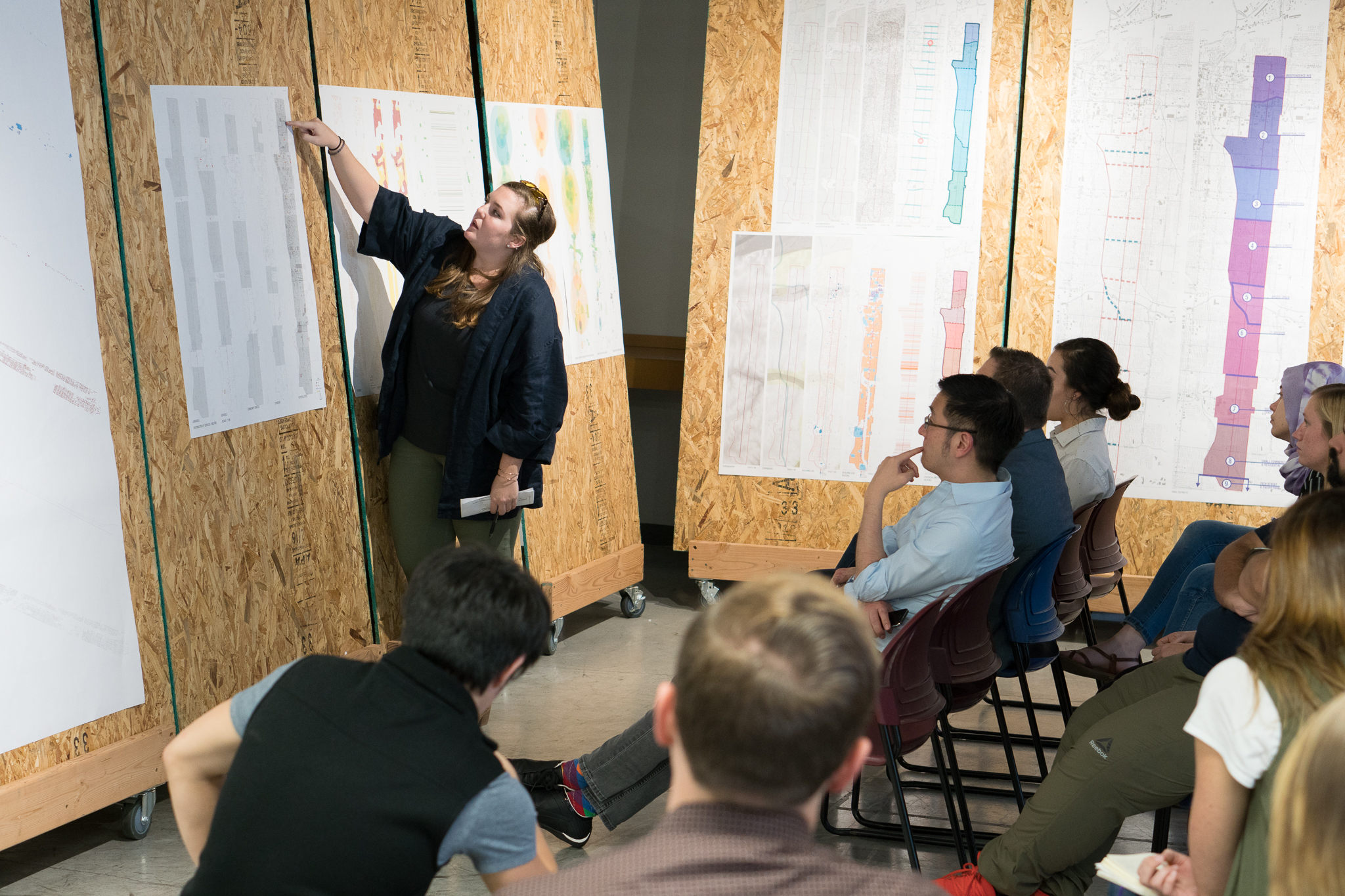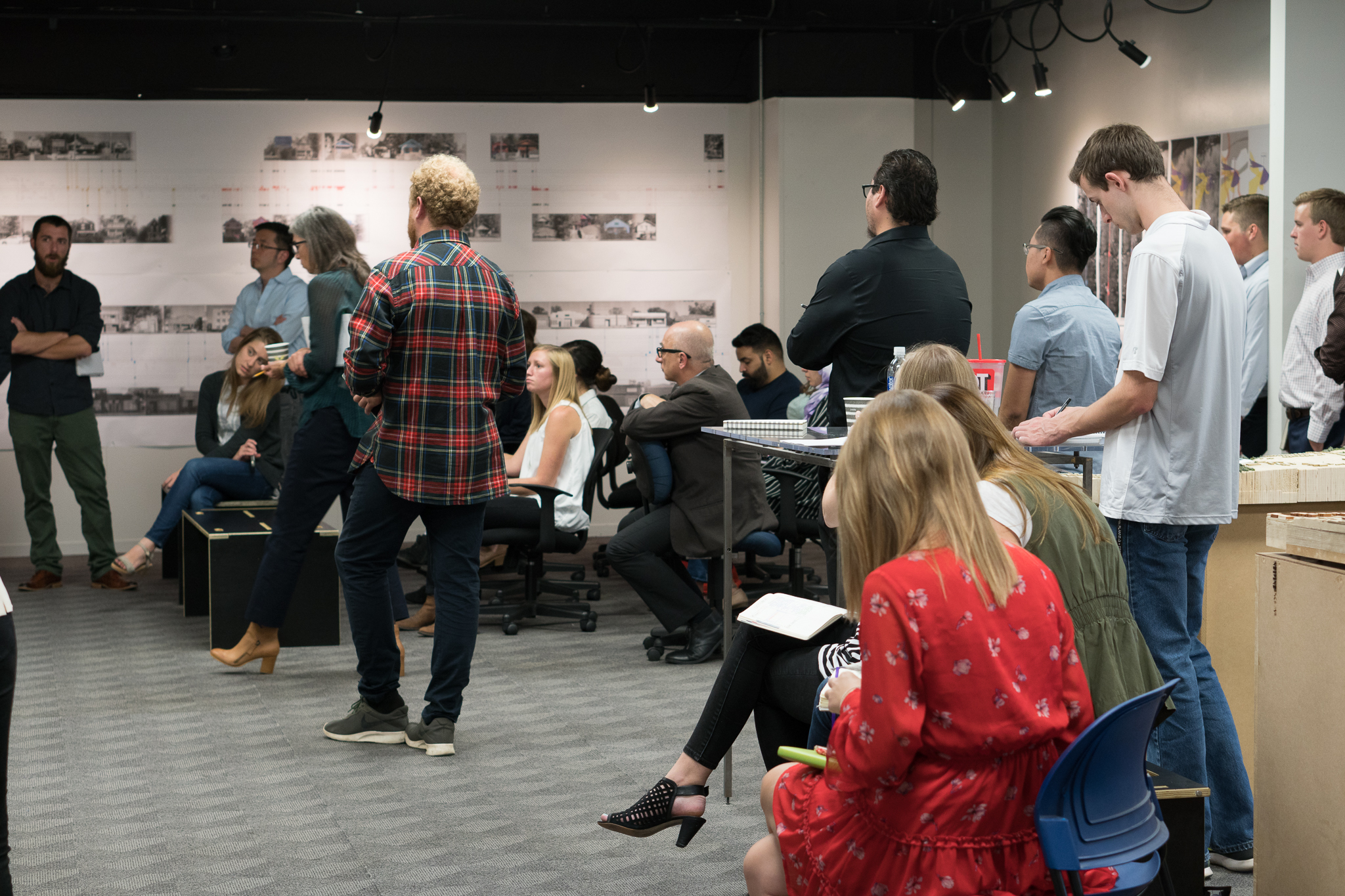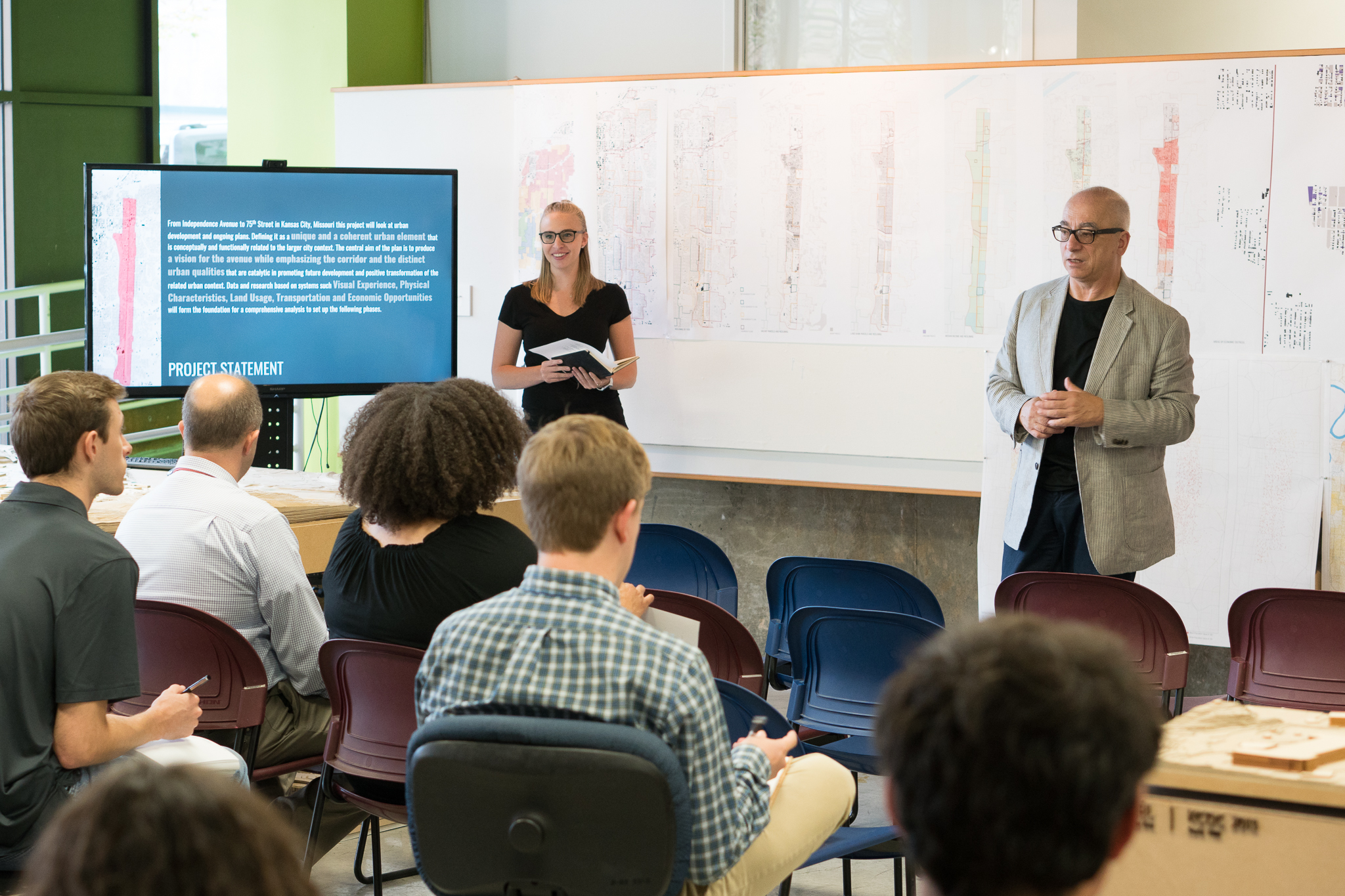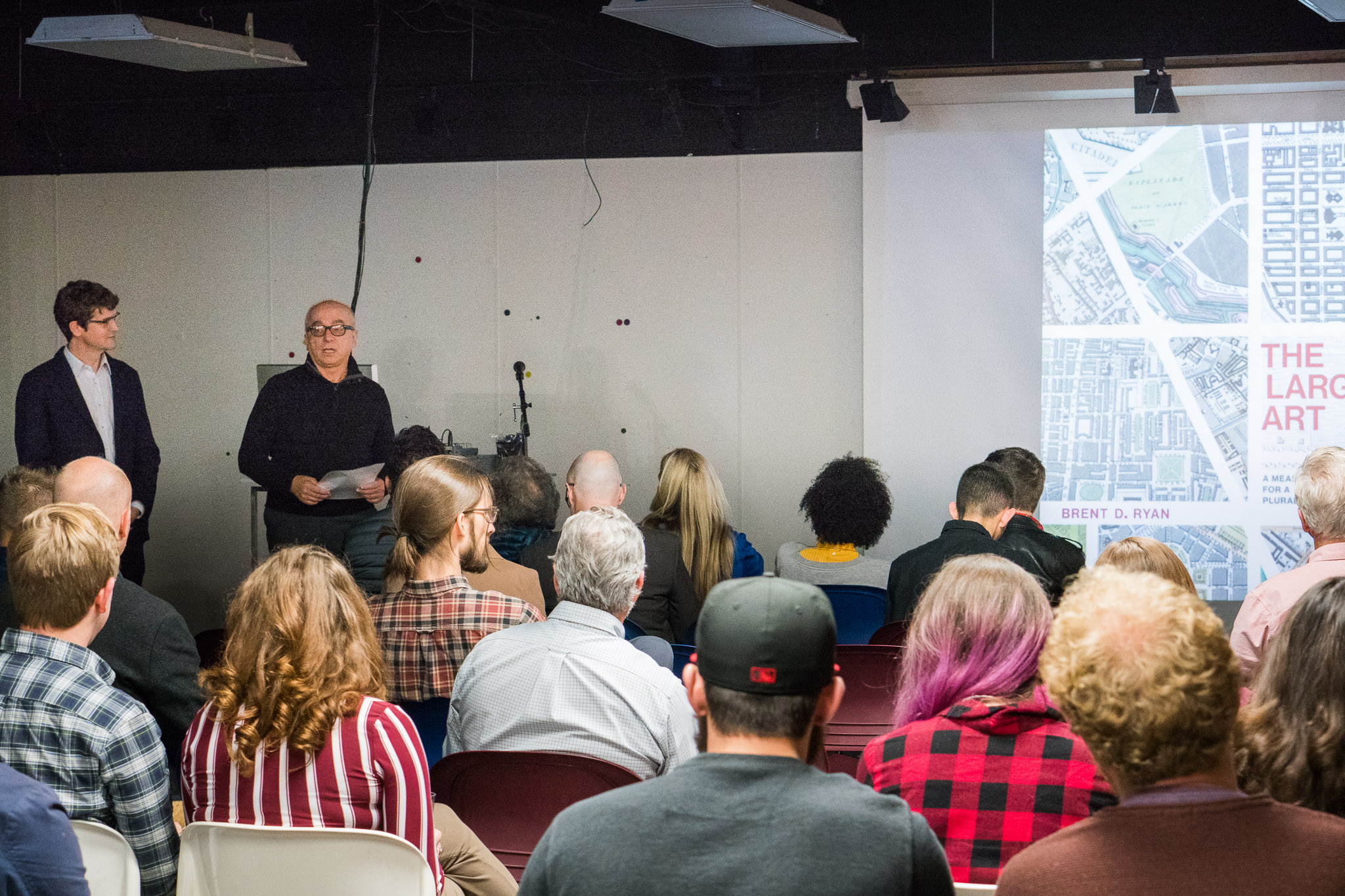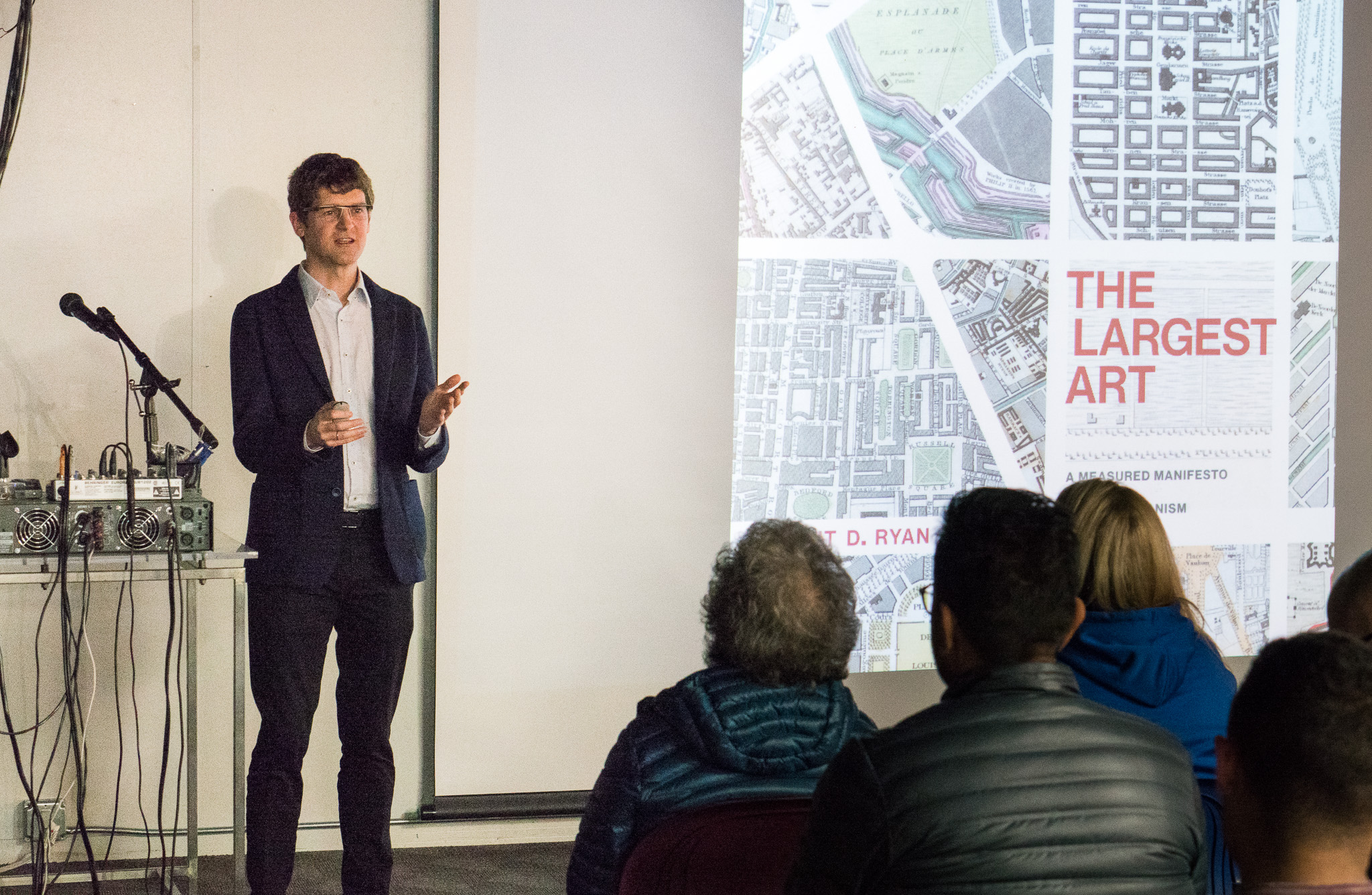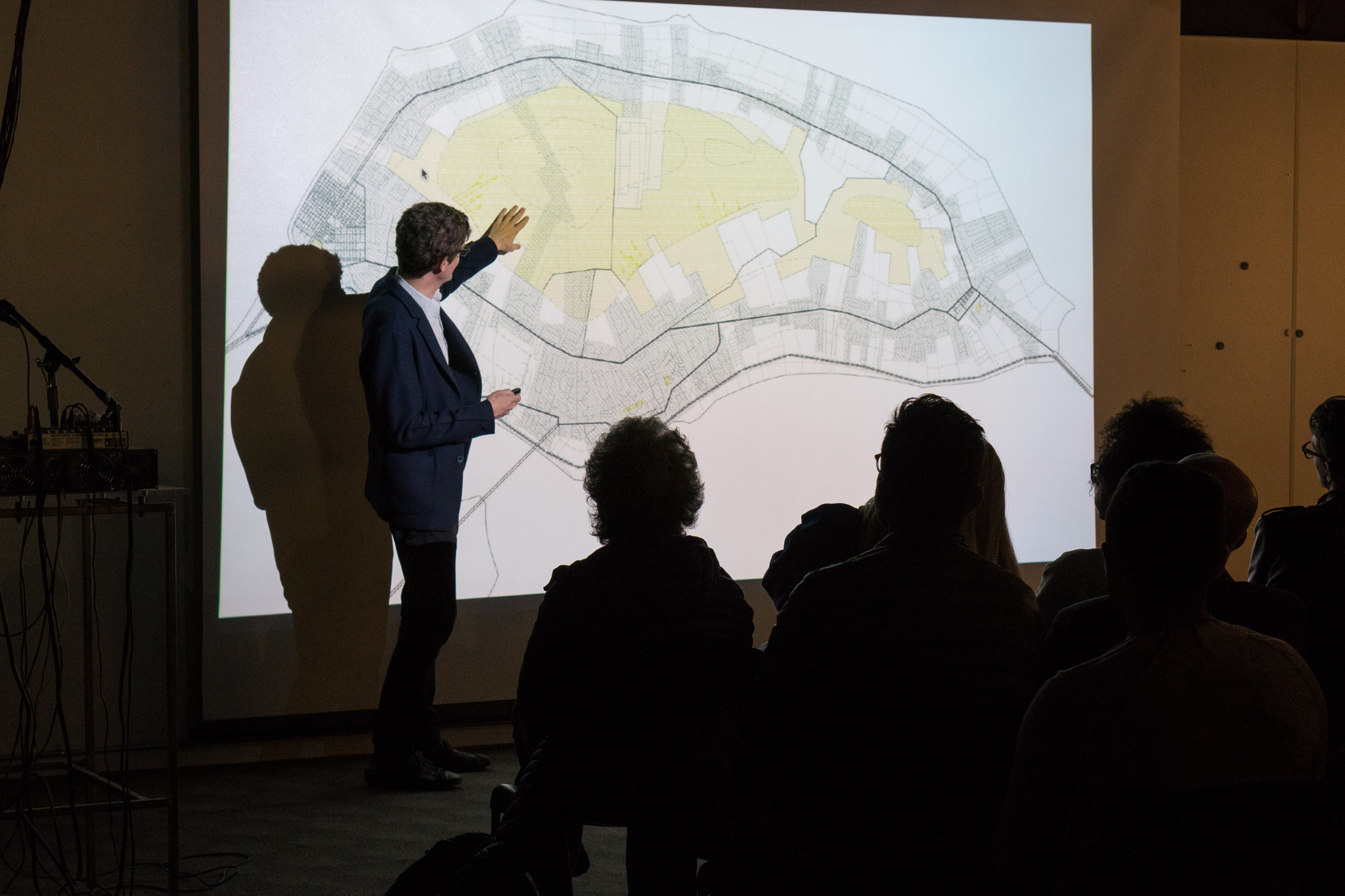Prospect Avenue Nodal Study: Wrapping up Phase I
Phase I of the KCDC urban design studio’s main project, the Prospect Avenue Nodal Study, is coming to an end. KCDC students presented their findings to a group of professionals on Monday, October 1st, and to the project advisory group on Wednesday, October 3rd. The establishment of the project boundary and conclusions driven from cross-mapping allowed us to create a conceptual framework or an overall understanding of Prospect Avenue.
Development of a study area
(maps left to right: topography, highways, neighborhoods, & 1/4 mile)
The initial project boundary was from Independence Avenue on the North to the 75th Street on the South, however, initial analysis indicated the need to further establish the project boundary. In order to achieve this, we investigated different factors and conditions that influence Prospect Avenue:
Initiatives and Plans: Investigating the boundary lines of existing plans and initiatives conducted in Kansas City. Kansas City Playbook took hierarchy.
Watersheds: Considering floodplain and hydrology elements within Kansas City.
Neighborhoods Along Prospect: Defining lines of established neighborhoods touching Prospect Avenue and any other adjacent neighborhoods.
Census Tract Blocks: Mapping common subdivisions of people into a cohesive boundary around Prospect Avenue based on census data.
¼ Mile Walk Boundary: Specifying the distance traveled from Prospect Avenue after walking approximately 5 minutes.
71 Highway: Charting the major highway division along Prospect Avenue; 71 breaks Prospect Avenue into two east and west sides. Since its construction, 71 Highway has displaced over 10,000 people.
It’s important to note that the project boundary is not set in stone; it will remain flexible throughout the project and may respond to additional findings throughout the process.
In addition to furthering the project boundary, we continued to push the mapping a step further. Once inventory mapping was complete, it was essential to start cross-mapping to establish the key conditions of Prospect Avenue:
History: The present conditions of Prospect Avenue are a result of the past conditions. We are calling these conditions “barriers.”
Land Programming: There is an overall lack of day-to-day services. Vacant parcels could be used as an opportunity to gain some of these missing services.
Transportation: 71 Highway is the highest traveled transit line in the metropolitan area.
Social-Economics: Not many people work and live within the boundary. There is a racial discrepancy between work and living.
Physical Conditions: Large scale physical cross-corridor connections and significant viewsheds tie Prospect Avenue back to Kansas City.
Urban Morphology: The urban form is poorly defined. Patterns and unique blocks are established from the change in urban form.
Architectural identity: Five residential types are found along Prospect Avenue. Existing visual patterns are cohesive but fragmented.
Continuing the further development of a conceptual framework will guide the next phase of the Prospect Nodal Study. The conceptual framework will include the issues and conditions that arise from the findings. Our vision, mission, and goals create a roadmap of where we want to go and how to get there.
Vision: Our vision is a community-focused platform that establishes a cohesive urban concept for the future of Prospect Avenue, leveraging the corridor as a uniquely desirable place within Kansas City.
Mission: Our mission is to create a conceptual framework through the identification, evaluation, and exploration of the current conditions which define the Prospect Corridor. The intent of the framework is to encourage social connections and economic growth through strategic design intervention and development policies. Catalytic nodes are selected for strategic exploration using the conceptual framework developed through the analysis of the Prospect Corridor.
Goal: Our goals are to test and propose a design platform for:
Cultural Identity Development
Safety and Security
Diverse, Affordable, And Quality Housing
Economic Opportunity
Environmental Quality
Responsive (Alternative) TOD Strategies
Reintegration into the Greater KC Area
We will continue to further the vision, mission, and goals of Prospect Nodal Study as the project continues. Our next professional review is set for October 22nd. We will present progress findings to receive feedback and input that will help us continue to push the project further.
Lastly, on October 11th, the KCDC held its first public lecture of the 2018/19 academic year with Brent Ryan, Associate Professor of Urban Design and Public Policy in MIT’s Department of Urban Studies and Planning. During the lecture, Brent discussed his book The Largest Art which provides a new foundational theory of urban design that is based on a more pluralistic, democratic vision of the city. Brent’s lecture is significant to the Prospect Avenue Nodal Study because it provided a theoretical framework for looking at and understanding the city which is aligned with the analytical design considerations for the project. The analytical categories that Brent proposed as part of his new manifesto on urban design (scale, time, property, agents, and form) allow us to further understand our analytical findings and strategically organize them to generate a basis for urban design iterations.

